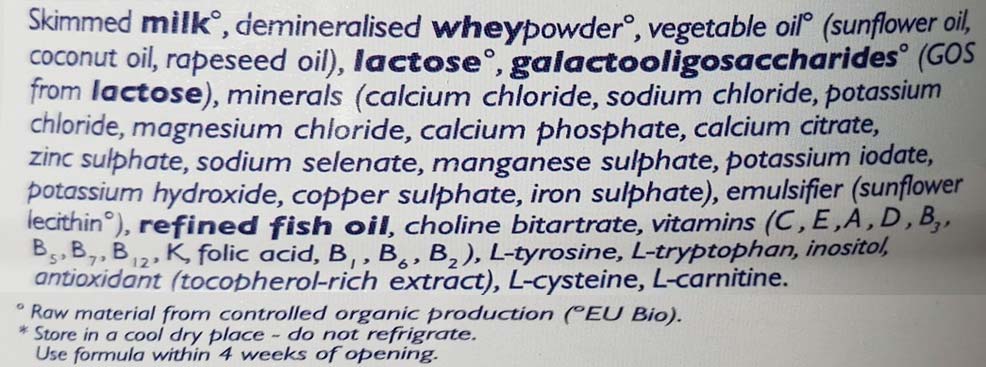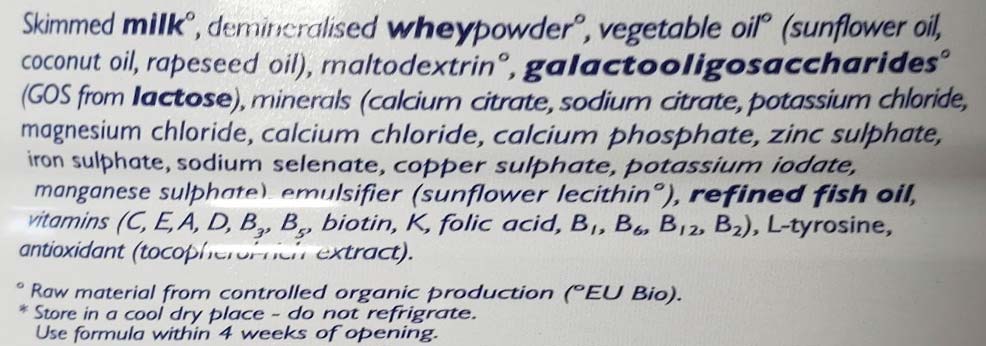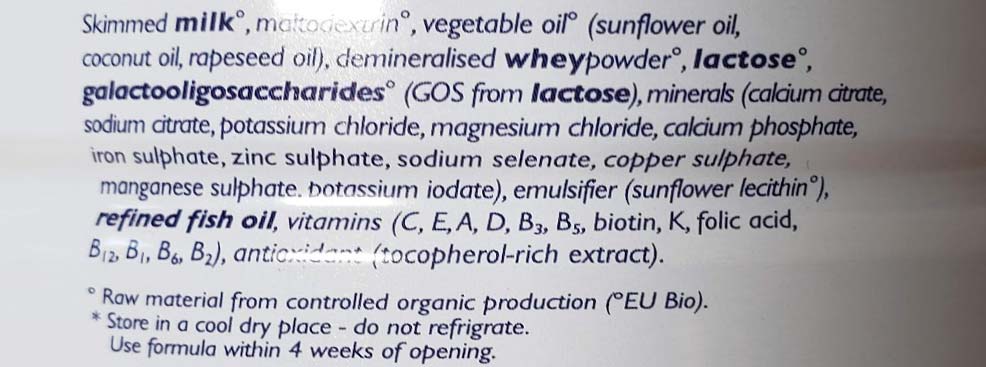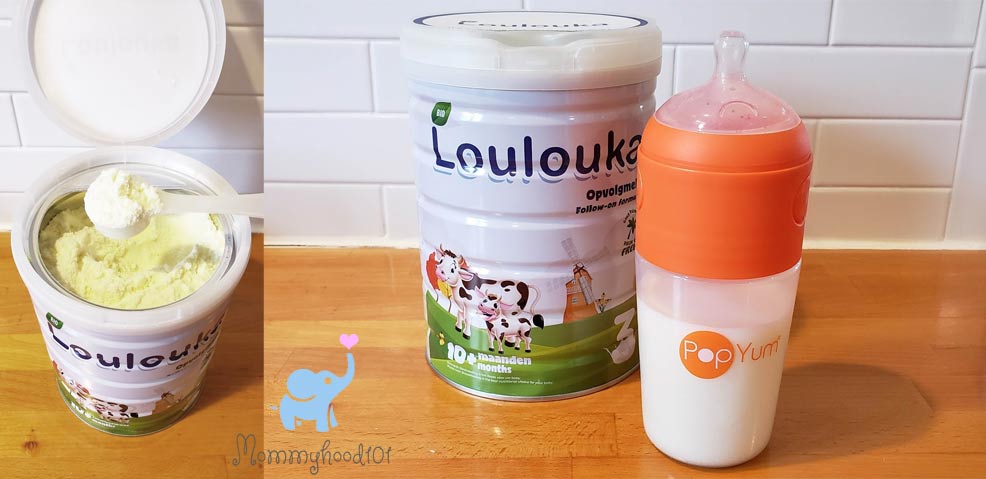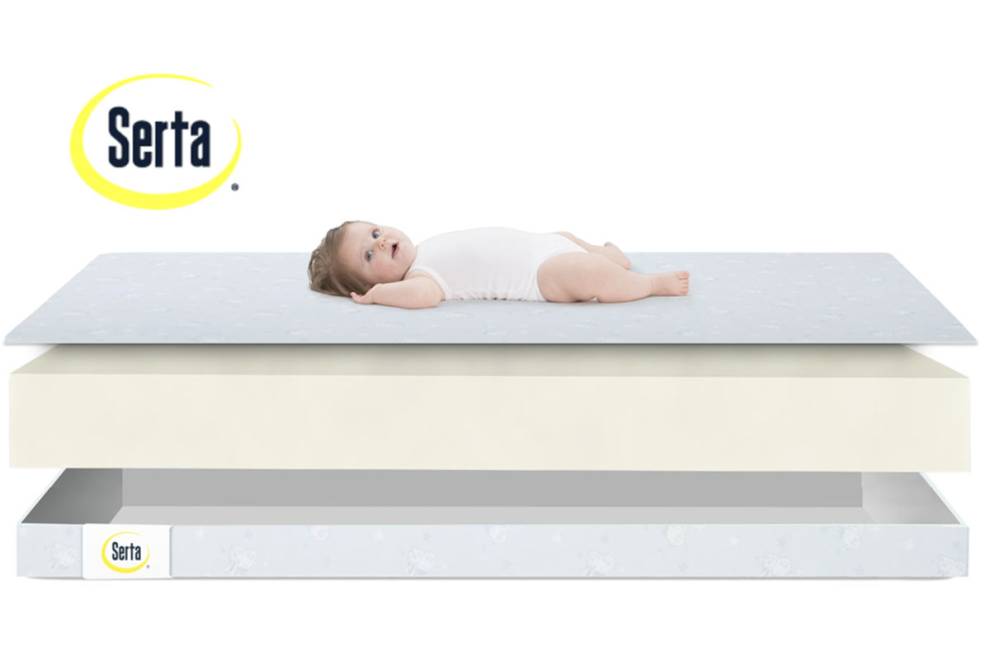Formula feeding made easy-peasy with this organic baby formula from Loulouka.

Mommyhood101 independently tests and curates baby gear to help you make informed decisions. If you buy products through links on our site, we may earn a commission.
Alert: Loulouka was discontinued indefinitely. As of 2025-2026, we have heard some vague rumors that Loulouka might be coming back. We'll keep you updated! We suggest checking other options on our list of the best organic formulas.
Loulouka organic formulas were introduced in 2016 by several baby formula industry experts who worked with some of the biggest European baby formula brands. Frustrated by the inconsistent quality and composition of popular European infant formulas, a better alternative was developed: Loulouka.
In our review of Loulouka infant and follow-on formulas, we consulted with a developmental nutritionist (see references at end), tested the formula ourselves and on two infants and one toddler, analyzed the ingredients and nutritional contents relative to United States (USDA and FDA) recommendations, and pulled together our research into some strong conclusions about Loulouka formulas.
Spoiler alert, we love Loulouka and are grateful to have tested it out. Loulouka formulas make zero compromises, especially the stage 1 formula (from birth to 6 months). They not only conform to the most recent EU guidelines for baby formulas, they go above and beyond with the addition of not only DHA, ALA, and LA, but also prebiotics, inositol, choline, and amino acids.
They meet and exceed US infant feeding guidelines, and we found very high acceptance rates among our test infants and toddler. Based on our results, Loulouka has secured an impressively high ranking in our list of the best organic baby formulas!
-
- Loulouka Comparison Table
- Take-Home Message
- Some Translations to Know
- Loulouka Farming Practices
- EU Organic Farming
- Loulouka Ingredients
- Loulouka Stage 1 Ingredients
- Loulouka Stage 2 Ingredients
- Loulouka Stage 3 Ingredients
- Loulouka Stages: Ingredient Differences
- Loulouka Nutritional Analysis
- USDA Formula Recommendations
- Loulouka Stage 1 Nutrition
- Loulouka Stage 2 Nutrition
- Loulouka Stage 3 Nutrition
- Loulouka Testing in Infants
- Conclusions
- Where to Buy Loulouka
- References Cited
Loulouka Formulas: Take-home Message
Most people don't want to read this entire article to see what we found. So here is the summary of what we loved, and what we didn't.
✔️ High quality organic formulation.
✔️ Swiss organic milk.
✔️ Nutrition near FDA & USDA guidelines.
✔️ First ingredient is skim milk.
✔️ Nothing artificial.
✔️ No Maltodextrin in Stage 1.
✔️ No sucrose or corn syrups.
✔️ Gluten & soy free.
✔️ No palm oil.
✔️ Omega-3 via DHA & ALA.
✔️ Omega-6 via LA.
✔️ Inositol & Choline in Stage 1.
✔️ Amino Acids.
✔️ High infant acceptance, good taste.
✔️ No gas, indigestion, or constipation.
❌ Maltodextrin in Stages 2-3.
Loulouka Formulas: Some Translations
The Loulouka labels are in both Dutch and English, so you won't need any translations!
This is a welcome addition to the baby formula market, making it much easier for American parents to know exactly what they are feeding their babies.
Loulouka Formulas: Best Practices?
Loulouka is made in Switzerland using organic Swiss milk and EU certified organic ingredients. The EU has stricter organic regulations than the USDA Organic certification. The EU certification process allows you to show the below (center) star leaf icon.
Loulouka meets the EU requirement for a minimum 98% organic content; by comparison the USDA Organic certification process requires a minimum of 95% organic content.
What are the EU's organic regulations?
The European Union (EU) has a strict system of organic controls that are enforced through an annual inspection process. These inspections result in an annual certificate being issued for conforming products.
While Loulouka is made in Switzerland (which is not part of the EU), they are based in the Netherlands and conform to EU organic standards. Here are the specific organic regulatory criteria:
- No protecting plants by using synthetic chemicals such as herbicides or pesticides.
- No use of soluble mineral fertilizers.
- No application of chemical growth regulators.
- Feeding animals with farm-grown feed, not purchased feed, when possible.
- No use of antibiotics other than to treat infection.
Overall, to use the EU certified organic label, products must meet a stringent 98% organic content (by weight). By comparison, the United States USDA organic certification process has a 95% minimum.
The Loulouka formulas are EU certified by Bio-Inspecta, bearing the label CH-BIO-006. Bio-Inspecta is a registered Swiss Organic Certification/Inspection body, located outside of Zurich.
Loulouka Formula Ingredients
Loulouka formulas are progressive in their ingredients, going beyond requirements to include Omegas, prebiotics, amino acids, inositol, and choline. The use of Swiss organic milk products will provide some relatively intangible benefits for the quality of Loulouka infant formulas. These benefits do not appear on an ingredients label, and include minimal trace pesticides, herbicides, antibiotics, or heavy metals.
Here are the ingredients in each of the Loulouka baby formulas (these are the newest formulations, as of August 2020):
Loulouka Stage 1 Ingredients: Organic Skimmed Milk, Organic Demineralized Whey Powder, Organic Vegetable Oils [Organic Sunflower Oil, Organic Coconut Oil, Organic Rapeseed Oil], Organic Lactose, Galactooligosaccharides (GOS from lactose), Minerals (Calcium Chloride, Sodium Chloride, Potassium Chloride, Magnesium Chloride, Calcium Phosphate, Calcium Citrate, Zinc Sulphate, Sodium Selenate, Manganese Sulphate, Potassium Iodate, Potassium Hydroxide, Copper Sulphate, Iron Sulphate), Emulsifier (organic sunflower lecithin), Refined Fish Oil, Choline Bitartrate, Vitamins (C, E, A, D, B3, B5, B7, B12, K, Folic Acid, B1, B6, B2), L-tyrosine, L-tryptophan, Inositol, Antioxidants (tocopherol-rich extract), L-cysteine, L-carnitine.
Loulouka Stage 2 Ingredients: Organic Skimmed Milk, Organic Demineralized Whey Powder, Organic Vegetable Oils [Organic Sunflower Oil, Organic Coconut Oil, Organic Rapeseed Oil], Organic Maltodextrin, Galactooligosaccharides (GOS from lactose), Minerals (Calcium Citrate, Sodium Citrate, Potassium Chloride, Magnesium Chloride, Calcium Chloride, Calcium Phosphate, Zinc Sulphate, Iron Sulphate, Sodium Selenate, Copper Sulphate, Potassium Iodate, Manganese Sulphate), Emulsifier (organic sunflower lecithin), Refined Fish Oil, Vitamins (C, E, A, D, B3, B5, Biotin, K, Folic Acid, B1, B6, B12, B2), L-tyrosine, Antioxidants (tocopherol-rich extract).
Loulouka Stage 3 Ingredients (translated): Organic Skimmed Milk, Organic Maltodextrin, Organic Vegetable Oils [Organic Sunflower Oil, Organic Coconut Oil, Organic Rapeseed Oil], Organic Demineralized Whey Powder, Organic Lactose, Galactooligosaccharides (GOS from lactose), Minerals (Calcium Citrate, Sodium Citrate, Potassium Chloride, Magnesium Chloride, Calcium Phosphate, Iron Sulphate, Zinc Sulphate, Sodium Selenate, Copper Sulphate, Manganese Sulphate, Potassium Iodate), Emulsifier (organic sunflower lecithin), Refined Fish Oil, Vitamins (C, E, A, D, B3, B5, Biotin, K, Folic Acid, B12, B1, B6, B2), Antioxidants (tocopherol-rich extract).
Here are some ingredients that are not in any of the stages of Loulouka: palm oil, food starch, corn syrup, corn syrup solids, artificial colors, flavors, or preservatives, sucrose, soy, genetically modified organisms (GMOs), carrageenan, or high fructose corn syrup.
Some ingredients we didn't appreciate: Maltodextrin as a thickening carbohydrate is present in Stages 2 and 3; in stage 2 it replaces lactose entirely, and in stage 3 it complements lactose.
Loulouka Stages: Ingredient Differences
1. Loulouka Stage 1 versus Stage 2: There are two main differences between Loulouka Stages 1 and 2. Stage 1 uses lactose as a primary carbohydrate source (like breastmilk), whereas Stage 2 adds maltodextrin. Maltodextrin is not the ideal carbohydrate, and when it is used we prefer it to be used in conjunction with lactose, like what is done in Stage 3. Of course, realize that the Loulouka Stage 2 still has more lactose per serving (5.3g) than maltodextrin (2.4g). Stage 2 also removes Inositol and several amino acids that were present in Stage 1 (L-tryptophan, L-cysteine, L-carnitine). Stage 1 is intended for use from birth onward, and Stage 2 for 6+ months.
2. Loulouka Stage 2 versus Stage 3: There are two main differences between Loulouka Stages 2 and 3. First, Stage 3 adds some lactose back into the ingredients list, though it's in very low quantity. It also removes the one amino acid remaining in Stage 2 (L-tyrosine). Stage 2 is intended for 6+ months, and Stage 3 for 10+ months.
Speaking of ingredients and labeling, we really loved how transparent Loulouka is with their labeling. They even provide the actual grams of lactose versus other carbohydrate contents, which is a breath of fresh air!
Loulouka Formula Nutritional Analysis
To gather insights into whether Loulouka meets stringent US nutritional recommendations by the US Department of Agriculture (USDA), Food and Drug Administration (FDA), and American Academy of Pediatrics (AAP), we gathered insights from a dietician nutritionist with expertise in infant feeding. In addition to offering us guidance, he also directed us to the USDA's published recommendations (see References).
Note that the US FDA also publishes minimum infant formula nutritional requirements (see references), but all of the infant formulas we reviewed met these published standards, and they are only relevant for 0-6 months. Because the Loulouka formulas appear to meet the FDA minimum requirements (according to our review), we compared them to the more general USDA daily intake recommendations.
The USDA does not publish recommended daily allowances (RDAs) for infants between 0-6 months. Instead, they publish information about Adequate Intakes (AI), which are used when there is not enough evidence to make a formal RDA. The AI is set at a level assumed to provide nutritional adequacy.
Here are the USDA's AIs (per day) for infants aged 0-6 months, and 6-12 months. Units are grams (g), milligrams (mg), micrograms (μg).
USDA Nutritional Recommendations:
| Carbohydrates | 0-6mo: 60g | 6-12mo: 95g |
| Proteins | 0-6mo: 9.1g | 6-12mo: 11g |
| Fats | 0-6mo: 31g | 6-12mo: 30g |
| Omega-3 | 0-6mo: 0.5g | 6-12mo: 0.5g |
| Omega-6 | 0-6mo: 4.4g | 6-12mo: 4.6g |
| Vitamin A | 0-6mo: 400μg | 6-12mo: 500μg |
| Vitamin B1 | 0-6mo: 0.2mg | 6-12mo: 0.3mg |
| Vitamin B2 | 0-6mo: 0.3mg | 6-12mo: 0.4mg |
| Vitamin B6 | 0-6mo: 0.1mg | 6-12mo: 0.3mg |
| Vitamin B12 | 0-6mo: 0.4μg | 6-12mo: 0.5μg |
| Vitamin C | 0-6mo: 40mg | 6-12mo: 50mg |
| Vitamin D | 0-6mo: 5μg | 6-12mo: 5μg |
| Vitamin E | 0-6mo: 4mg | 6-12mo: 5mg |
| Vitamin K | 0-6mo: 2μg | 6-12mo: 2.5μg |
| Folate | 0-6mo: 65μg | 6-12mo: 80μg |
| Niacin | 0-6mo: 2mg | 6-12mo: 4mg |
| Calcium | 0-6mo: 210mg | 6-12mo: 270mg |
| Iron | 0-6mo: 0.27mg | 6-12mo: 11mg |
Given that the Stage 1 Loulouka formula is intended for use from birth to 6 months, we evaluated its nutritional content against the USDA 0-6 month recommendations. For the Stage 2 and 3 versions, we evaluated against the USDA 6-12 month recommendations.
Because the USDA recommendations are for daily intake, we considered the daily intake recommended by Loulouka in their "Feeding Guide." Stage 1 suggests an average of about 110 grams of formula per day for the first 6 months; of course, this is lower (about 85 grams) for the first month, then increases with age to over 130g/day.
To derive an estimate of how much nutritional content a baby would receive each day when using Loulouka, we used the average recommended serving for the first 6 months (about 110 grams of formula per day). This will overestimate nutrients for early months, and underestimate for later months. As you will see from our analysis, this isn't cause for much concern.
Does Loulouka Stage 1 Meet USDA Nutritional Recommendations?
In general, yes, very similarly to US-made baby formulas. Here is a table comparing the USDA recommendation for 0-6 months to what the Loulouka Stage 1 provides (in about 110g of formula):
| Carbohydrates | USDA: 60g | Stage 1: 61.2g |
| Proteins | USDA: 9.1g | Stage 1: 11.5g |
| Fats | USDA: 31g | Stage 1: 27.7g |
| Omega-3 | USDA: 0.5g | Stage 1: 0.6g |
| Omega-6 | USDA: 4.4g | Stage 1: 3.3g |
| Vitamin A | USDA: 400μg | Stage 1: 493μg |
| Vitamin B1 | USDA: 0.2mg | Stage 1: 0.49mg |
| Vitamin B2 | USDA: 0.3mg | Stage 1: 0.9mg |
| Vitamin B6 | USDA: 0.1mg | Stage 1: 0.49mg |
| Vitamin B12 | USDA: 0.4μg | Stage 1: 1.6μg |
| Vitamin C | USDA: 40mg | Stage 1: 109mg |
| Vitamin D | USDA: 5μg | Stage 1: 12.5μg |
| Vitamin E | USDA: 4mg | Stage 1: 14.5mg |
| Vitamin K | USDA: 2μg | Stage 1: 38μg |
| Folate | USDA: 65μg | Stage 1: 141μg |
| Niacin | USDA: 2mg | Stage 1: 4.3mg |
| Calcium | USDA: 210mg | Stage 1: 381mg |
| Iron | USDA: 0.27mg | Stage 1: 5.9mg |
Notice how close all of those numbers are to each other, with Loulouka generally exceeding USDA nutritional recommendations. The fat is a bit low relative to USDA guidance, which is very common in European baby formulas. Specifically, European formulas tend to have slightly higher protein and slightly lower fat than American baby formulas. Also, the Omega-6 is slightly lower than recommended; HiPP and Holle Stage 1 both meet this specific recommendation.
USDA guidance for fat is 31g per day, which precisely matches how much fat is in breastmilk (about 4.2g per 100mL, or 30.8g per 100g). Loulouka comes in at about 28g/day, which is about the same as both HiPP Combiotic and Holle Stage 1. In general, EU baby formulas tend to prioritize carbohydrates and proteins in Stage 1, and then prioritize proteins and fats in Stage 2.
We compared the Loulouka Stage 1 nutritional profile with the most popular Similac and Enfamil (American) formulas. Those come a bit closer to the USDA recommendation of 31g fat per day (Similac and Enfamil are usually around 27g of fat per 100g of formula), but still slightly under.
In other words, Loulouka Stage 1 provides an overall nutritional profile that is very similar to the major American baby formula brands, though it is a bit light on the fat content and compensates with a slightly higher protein content.
Does Loulouka Stage 2 Meet USDA Nutritional Recommendations?
In looking at the USDA recommendations for infants 6-12 months of age, you realize that they recommend about 140-150g/day of formula. That equates to about 32 scoops (4.5g/scoop) per day, which is about 1074mL per day of prepared Stage 2 formula. Clearly that's a ton of formula and unlikely to be the case with your baby, since you'll likely be supplementing formula with at least some oatmeal and/or rice cereal.
Here is a table comparing the USDA recommendation for 6-12 months to what the Loulouka Stage 2 provides (in 145g of formula):
| Carbohydrates | USDA: 95g | Stage 2: 83.5g |
| Proteins | USDA: 11g | Stage 2: 15.6g |
| Fats | USDA: 30g | Stage 2: 34.3g |
| Omega-3 | USDA: 0.5g | Stage 2: 0.7g |
| Omega-6 | USDA: 4.6g | Stage 2: 4.2g |
| Vitamin A | USDA: 500μg | Stage 2: 651μg |
| Vitamin B1 | USDA: 0.3mg | Stage 2: 0.65mg |
| Vitamin B2 | USDA: 0.4mg | Stage 2: 1.7mg |
| Vitamin B6 | USDA: 0.3mg | Stage 2: 0.65mg |
| Vitamin B12 | USDA: 0.5μg | Stage 2: 1.7μg |
| Vitamin C | USDA: 50mg | Stage 2 159mg |
| Vitamin D | USDA: 5μg | Stage 2: 17.1μg |
| Vitamin E | USDA: 5mg | Stage 2: 16mg |
| Vitamin K | USDA: 2.5μg | Stage 2: 50μg |
| Folate | USDA: 80μg | Stage 2: 188μg |
| Niacin | USDA: 4mg | Stage 2: 5.8mg |
| Calcium | USDA: 270mg | Stage 2: 650mg |
| Iron | USDA: 11mg | Stage 2: 10.7mg |
For Stage 2, the Loulouka comes in over the protein and fat recommendations of USDA, and slightly under the carbohydrate recommendation. In other words, the Stage 2 formula is shifting towards a higher protein and fat diet, with lower sugars.
From 0-6 months to 6-12 months, the USDA shifts the relative proportion of carbohydrates up, and proteins and fats down. This is a difference in European versus American feeding recommendations, with proportions shifting in opposite directions as babies move from Stage 1 to Stage 2.
Does Loulouka Stage 3 Meet USDA Nutritional Recommendations?
As with Stage 2, we use the USDA 6-12 month recommendations. Stage 3 is always a difficult comparison to make, because your child will also be eating first foods (oatmeal and rice cereals, purees) by the time they are 10+ months. Those solid foods will complement any feeding done with a Stage 3 formula, making any estimates of formula quantity to fulfill caloric needs of a 10+ month old baby a bit unreasonable.
For example, to get 145g/day of Stage 3 formula, that would take about 31 scoops of the product, and over 1000mL of prepared formula per day (about 5 servings). That's pretty excessive! More reasonably, your child will be consuming about 2-3 servings of Stage 3, along with a couple servings of cereals and purees.
In any event, here is what Loulouka Stage 3 provides, at a 145g/day serving:
| Carbohydrates | USDA: 95g | Stage 3: 82g |
| Proteins | USDA: 11g | Stage 3: 15.8g |
| Fats | USDA: 30g | Stage 3: 31.5g |
| Omega-3 | USDA: 0.5g | Stage 3: 0.69g |
| Omega-6 | USDA: 4.6g | Stage 3: 3.8g |
| Vitamin A | USDA: 500μg | Stage 3: 630μg |
| Vitamin B1 | USDA: 0.3mg | Stage 3: 0.63mg |
| Vitamin B2 | USDA: 0.4mg | Stage 3: 1.8mg |
| Vitamin B6 | USDA: 0.3mg | Stage 3: 0.63mg |
| Vitamin B12 | USDA: 0.5μg | Stage 3: 2.0μg |
| Vitamin C | USDA: 50mg | Stage 3: 154mg |
| Vitamin D | USDA: 5μg | Stage 3: 15μg |
| Vitamin E | USDA: 5mg | Stage 3: 11mg |
| Vitamin K | USDA: 2.5μg | Stage 3: 49μg |
| Folate | USDA: 80μg | Stage 3: 182μg |
| Niacin | USDA: 4mg | Stage 3: 5.6mg |
| Calcium | USDA: 270mg | Stage 3: 784mg |
| Iron | USDA: 11mg | Stage 3: 10mg |
In terms of macronutrients (proteins, fats, carbohydrates), you'll notice that Stage 3 is very similar to Stage 2 in its nutritional composition and proportions. In general, it meets USDA recommendations, but prioritizing proteins and fats rather than carbohydrates, which is the opposite of the American tendency to prioritize carbohydrates over proteins and fats.
In 2020, the EU passed (well, it was passed in 2016, but enforcement started February 2020) a requirement that baby formulas include Omega-3, and this is a new addition to most European formulas.

Most parents begin to introduce solid foods in addition to formula or breastfeeding. These usually first include rice and/or oatmeal cereals, and then progress to fruit and vegetable purees. These will complement the nutrition found solely in the formula, including additional iron and carbohydrates.
Some parents might be interested to learn that all European baby formulas contain trace levels of fluoride. This is not added by the manufacturer, but appears in trace amounts (0.007 per 100mL prepared formula) due to the water used during manufacturing. This is equivalent to about 0.05 mg of fluoride in a liter of prepared formula, which is much less than found in a bottled water (about 0.4mg per liter), and way less than found in fluoridated tap water (about 5mg per liter).
Loulouka Testing in Infants
Loulouka was generous enought to donate Stage 1, Stage 2, and Stage 3 varieties for testing. Thank you, Loulouka!
We tested the Stage 1 in a 2 month old formula-fed baby (she typically feeds with Holle), Stage 2 in a 7 month old breastfed baby (mom is getting prepared to begin weaning and wanting to find a formula to supplement with), and Stage 3 in a 14 month old toddler.
Mixing and Taste-Testing
The first thing we noticed is that the Loulouka were smooth and super easy to mix. There wasn't any clumping or bubbling during or after mixing, and no excess formula sticking to the insides of the bottle.
All three stages did a nice job blending easily with water. They were a bit foamy at the top after vigorous shaking, but the foam settled quickly after sitting and cooling down.
To prepare the formula, we boiled water and then left it to cool to around 100 degrees F. We mixed and shook the formula, then left it to sit for a couple minutes to cool down a few more degrees before feeding.
In terms of texture and taste, it's not as creamy and rich as Holle Pre formula or Kendamil Organic formulas (which both use whole milk, so that's not surprising), so Loulouka has a texture a bit more like breastmilk. It's most similar to the Holle Stage 1 in terms of consistency and texture in the mouth (and when rubbed between the fingers). It has a very nice flow through slow-flow nipples, without any slowing down like you can see with Holle Pre.
Notice how the bubbles and foam settled very nicely after mixing and sitting for about 10 minutes to cool to around 99deg F. Want to learn more about that PoPYum bottle? Check out our list of the Best Baby Bottles of the year.
By the way, the tins that Loulouka comes in are amazing and so much easier than the classic cardboard containers, with a flip-top lid and flat inside edge so you can level off the scoops of formula - nice touch!
Safety First: Never prepare powdered formula with anything but water. If you're interested in fortifying your breast milk with formula you must ask your doctor for guidance first, as this can be very dangerous for your baby.
Feeding with Loulouka
Both of the two babies, and the toddler, all took the Loulouka formula without any difficulties.
Interestingly, the baby who typically feeds with Holle seemed to prefer the Loulouka and drank more volume than usual.
The breastfed baby who was starting weaning at 7 months was a little hesitant at first, but took the Stage 2 Loulouka without any issues after a couple minutes of trying.
We didn't notice in our own taste-testing any hints of a fishy odor or flavor. Any baby formula using fish oil for DHA runs the risk of having a bit of a fishy flavor, so that wouldn't be surprising. But it's worth mentioning that we didn't notice anything.
None of the babies developed any noticeable gas relative to their usual post-feeding burps or spit-up. Same goes for conspitation and bowel movements, which the parents reported proceeded as usual after feeding a few times with Loulouka formulas. Note that both infant parents suggested they are going to adopt Loulouka as part of their feeding. The parent of the youngest infant is going to switch to Loulouka when they transition from Stage 1 to 2, and the parent who is weaning is going to use Loulouka Stage 2 to facilitate that process.
The toddler already eats a ton of finger foods and purees, so there's no real need for formula, but the parents kept the Stage 3 tin and will use the rest of it since their toddler seems to enjoy the flavor and it's filling.
Conclusions
This was our first time trying out the Loulouka formulas. This is a tough field to compete in, with companies like HiPP and Holle having ruled this market for several decades.
As European formulas are increasingly being imported to the US and used by American parents, we think it's great to see increasing competition in this area, especially when the new formulas are such high quality.
Overall, we're excited by several aspects of Loulouka formulas, including their use of organic Swiss milk, and organic whey and lactose. We love that they are pushing ahead of EU regulations by including not only Omega 3 and Omega 6 in their formulas (only Omega 3 in DHA form is required at this point in EU), but also including prebiotics, choline, inositol, and several essential and non-essential amino acids.
We also love that Loulouka provides very specific and comprehensive labeling for nutritional content, including information regarding the relative proportions of lactose and other carbohydrates. All three stages are lactose-heavy (Stage 1 is 7g lactose per serving), just like breastmilk. Lactose is still in good quantity even when maltodextrin is used in Stages 2 (5.3g lactose per serving) and 3 (5.1g lactose per serving).
We weren't super excited by the use of maltodextrin (Stages 2-3), but we did appreciate how it didn't replace the lactose content provided by the milk and whey.
Overall, the nutritional profile of Loulouka was slightly weak on fat content, like all European baby formulas, prioritizing protein and carbohydrates in Stage 1. All other macronutrients (carbohydrates, proteins) and micronutrients (vitamins, minerals) were at great levels relative to US guidelines.
In terms of mixing, taste, and acceptance, the Loulouka formulas were surprisingly similar to breastmilk, and overall acceptance rates were exceptional.
Expensive? Yes. All baby formula is expensive, and Loulouka and other European formula brands are among the most expensive on the market.
In general, Holle and Loulouka are not only the best European baby formulas on the market (in our opinion), but also the most expensive at about 6.5 cents per gram. HiPP and Lebenswert tend to be a bit less expensive, around 5.8 cents per gram, and Topfer tends to be the cheapest at about 4 cents per gram.
Where to Buy Loulouka?
Over the past 10+ years of operating Mommyhood101, we have worked with several companies that import European baby formulas to the United States.
Most of the companies have come and gone, some were pushed out by new FDA labeling requirements for European formulas, and some couldn't maintain their supply chain logistics and tended to ship expired or poorly handled formula.
The best prices on European baby formulas in the US were at MyOrganicCompany, which sells a huge variety of formulas to US customers and tends to have the best prices. Not only that, but they have free and super fast shipping, and keep their formulas in stock right here in the US for immediate shipping!
References Cited
Consulting Dietician Nutritionist (Mr. John Anderson)
EU Legislation Requirements for Infant Formula Composition
Consulting Food Sustainability Expert (Dr. Alexi Ernstoff)
United States FDA Infant Formula Nutrient Requirements
United States USDA Infant Nutritional Needs & Recommendations
Published Analysis of Nutritional Contents of European Baby Formulas
Disclaimer: To our knowledge, all ingredient and nutritional information contained in this article was accurate at the time of publication. We make no guarantees regarding the accuracy or timeliness of the information. Always read the packaging and instructions, and consult with your child's pediatrician before making nutritional and feeding decisions. Baby formulas manufactured and labeled for sale in Europe may or may not be approved for sale in the USA by the FDA or other regulatory bodies, so consumer discretion is advised.









